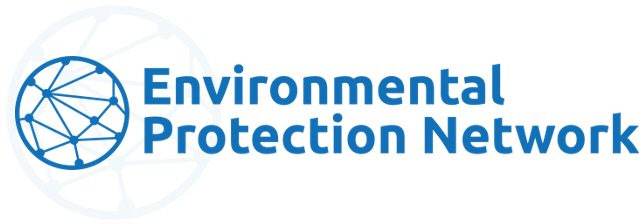Please share widely, especially with organizations who have federal funding! And please sign up to receive these updates in your inbox every 2 weeks or so.
After almost two months with almost all EPA environmental justice grants frozen and little communication from the agency, we are now at a moment when a lot is happening very quickly. Many EPA grantees have had their access to ASAP restored in the past 48 hours due to a recent court order.* At the same time, EPA is rapidly processing notices of termination for over 700 grants covering most, if not all, grants in EPA’s Office of Environmental Justice (including Community Change Grants, EJCPS, EJG2G, Grantmakers, TCTACs, and others). A full list of programs is at the bottom. In many cases, these terminations are unlawful and can be successfully challenged. We look forward to helping you vigorously contest them.
*Note that these recommendations are also relevant if you have a BIL or IRA grant from Department of Agriculture, Energy, Interior, or Housing & Urban Development. These federal agencies are also under a court order to unfreeze the grants.
There are two important steps for your organization to take right now:
- ASAP Funds Drawdown: Check ASAP 2x/day this week to see if your status has changed. If you regain access to funds, then move quickly to draw down funds to which you are legally entitled while being careful to stay in compliance with all rules and regulations on funds disbursement.
- Respond to Terminations: Ensure L4GG has your latest information and that you have access to counsel—either a pro bono lawyer through L4GG, in-house counsel, or other. These terminations clearly violate multiple provisions of federal law and existing judicial orders. Now is the time to build internal consensus on a plan to dispute a received or likely termination notice.
If, after taking those steps, you still want to do more, then we encourage you to also tell your story in the press and send (or resend) letters to your elected officials. You can find those resources at the bottom of this email.
More Details
1. Draw Down ASAP Funds
ASAP funding has been recently restored for many (non-terminated) EPA grantees, and for many grantees at other agencies through their respective funding systems. Below are some tips to make the most of the moment and to strategically draw down your funding and stay in compliance! ASAP is intended for grantees to draw down on incurred expenses and pay invoices within 5 business days of receipt of funds. There are a number of best practices and options available to you now:
a. Immediately submit invoices for prior expenses so that you are reimbursed for allowable expenses incurred during the funding freeze period.
b. Consider bulk purchasing of equipment/supplies needed for the entire project (particularly those subject to future tariffs), as a way of drawing down on funding. Make sure to follow any required federal procurement processes.
c. Consider drawing down for costs incurred in advance of starting work such as for construction or other types of projects with discrete work deliverables/phases, costs for mobilization, hiring contractors, and specialized service contracts.
d. Structure payment schedules in contracts to pay subcontractors for completion of discrete work deliverables or a per unit basis, rather than upon completion of the entire project.
e. Pay short-term stipends in advance. For workforce development or internship projects that need to be fully completed to meet project objectives, and have a fixed time/staff commitment, consider requesting EPA Project Officer approval to make this funding available at project start, with a plan to include regular updates of expenditures and proof of payments as part of audit readiness and subrecipient monitoring. Payments for incurred expenses such as apprenticeship wages should be made on a regular basis.
f. Maintain meticulous records on all drawdowns including invoices, supporting documentation, and proof of payments. Continue to update SF 425 forms to reflect these drawdowns, and provide updated SF 425 reporting through quarterly progress reports with high levels of financial activity.
g. We are here to help. Contact epa-support@trccompanies.com if you need pro bono assistance determining allowable drawdowns.
2. Prepare to Dispute Terminations
EPA filed a declaration in federal court last week stating that they have already issued 377 termination notices, and are in the process of sending termination notices to another 404. These notices cover most—if not all— grants funded under EPA’s Office of Environmental Justice and External Civil Rights. A full list of those programs is at the bottom of this email. As noted above, we believe that many of these terminations may be unlawful. Please read on for more details.
a. Prepare to Dispute Terminations: EPA filed a declaration in federal court last week stating that they have already issued 377 termination notices, and are in the process of sending termination notices to another 404. These notices cover most—if not all— grants funded under EPA’s Office of Environmental Justice. A full list of those programs is at the bottom of this email.
b. These terminations likely violate multiple legal rights and judicial orders. That includes:
- 2 CFR § 200.341(a), which requires specific grounds and procedural protections for termination of federal grants;
- EPA’s own grant agreements, which guarantee grantees the opportunity to respond, remedy issues, and receive advance notice before termination;
- A federal court’s April 15 injunction prohibits the agency from halting or suspending IRA/BIL funding without looking at grantee’s individual situations. Though that injunction has been appealed by the government, it remains in place while the appeals court considers the government’s arguments; and
- In many cases, terms and conditions that prevent the agency from terminating the grant based on a shift in agency priorities.
b. A notice of termination is a beginning, not an ending! If you receive a termination notice, then you have 30 days to dispute the decision. Consult this decision tree, then:
- Submit L4GG’s Fund Protection Clinic Intake Form. If you have filled out this form before and your only update is a termination letter, you can just send an email to fpc@l4gg.org with any updates.
- Consult with your pro bono attorney from L4GG and any in-house counsel, along with your leadership team, to determine your path forward.
3. Other Resources
- Please tell your elected representatives about the impacts a termination will have on your community—their constituents! Here is a template letter. Even if you sent a letter previously, this is a good moment to follow-up.
- Tell your story in the press. You can find sample talking points and media resources here. Please reach out to EPN Press using the subject line “grantee wanting to talk to press” if we can provide additional assistance.
- If your grant is still frozen, use this revised email template on the current nationwide preliminary injunction to send an email to your Project Officer, their supervisor, your Award Official, and applicable agency higher-ups. Use these resources on creating your administrative record to include the harms that these freezes have caused to the beneficiaries of your work and your organization.
4. List of Grant Terminations
EPA filed a declaration in federal court last week stating they are in the process of sending termination notices to a total of 781 grantees that includes the programs below:
- Environmental and Climate Justice Block Grant Program
- Note: This bucket includes the Community Change Grants (CCG) and the Environmental Justice Thriving Communities Grantmaking Program (Grantmakers).
- Environmental Justice Collaborative Problem-Solving Cooperative Agreement Program (EJCPS)
- Environmental Justice Government-to-Government (EJG2G) Program
- Environmental Justice Small Grants Program
- Environmental Justice Thriving Communities Grantmaking Program (Grantmakers)
- Financial Assistance For Community Support Activities To Address Environmental Justice Issues
- Reducing Embodied Greenhouse Gas Emissions for Construction Materials and Products
- Surveys, Studies, Investigations, Training and Special Purpose Activities Relating to Environmental Justice
- Note: This is the program includes funding for the TCTACs.

